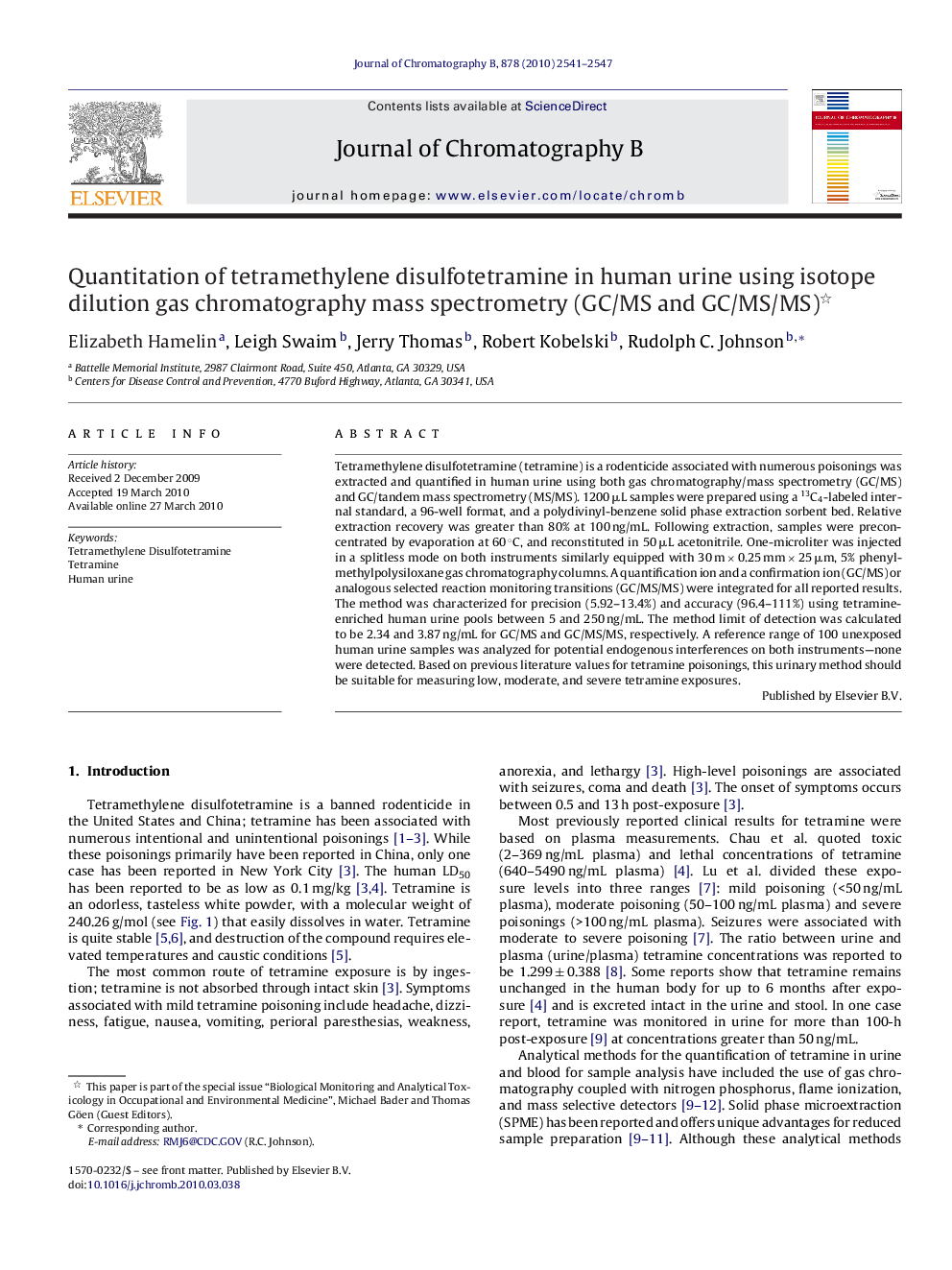| Article ID | Journal | Published Year | Pages | File Type |
|---|---|---|---|---|
| 1213763 | Journal of Chromatography B | 2010 | 7 Pages |
Tetramethylene disulfotetramine (tetramine) is a rodenticide associated with numerous poisonings was extracted and quantified in human urine using both gas chromatography/mass spectrometry (GC/MS) and GC/tandem mass spectrometry (MS/MS). 1200 μL samples were prepared using a 13C4-labeled internal standard, a 96-well format, and a polydivinyl-benzene solid phase extraction sorbent bed. Relative extraction recovery was greater than 80% at 100 ng/mL. Following extraction, samples were preconcentrated by evaporation at 60 °C, and reconstituted in 50 μL acetonitrile. One-microliter was injected in a splitless mode on both instruments similarly equipped with 30 m × 0.25 mm × 25 μm, 5% phenyl-methylpolysiloxane gas chromatography columns. A quantification ion and a confirmation ion (GC/MS) or analogous selected reaction monitoring transitions (GC/MS/MS) were integrated for all reported results. The method was characterized for precision (5.92–13.4%) and accuracy (96.4–111%) using tetramine-enriched human urine pools between 5 and 250 ng/mL. The method limit of detection was calculated to be 2.34 and 3.87 ng/mL for GC/MS and GC/MS/MS, respectively. A reference range of 100 unexposed human urine samples was analyzed for potential endogenous interferences on both instruments—none were detected. Based on previous literature values for tetramine poisonings, this urinary method should be suitable for measuring low, moderate, and severe tetramine exposures.
